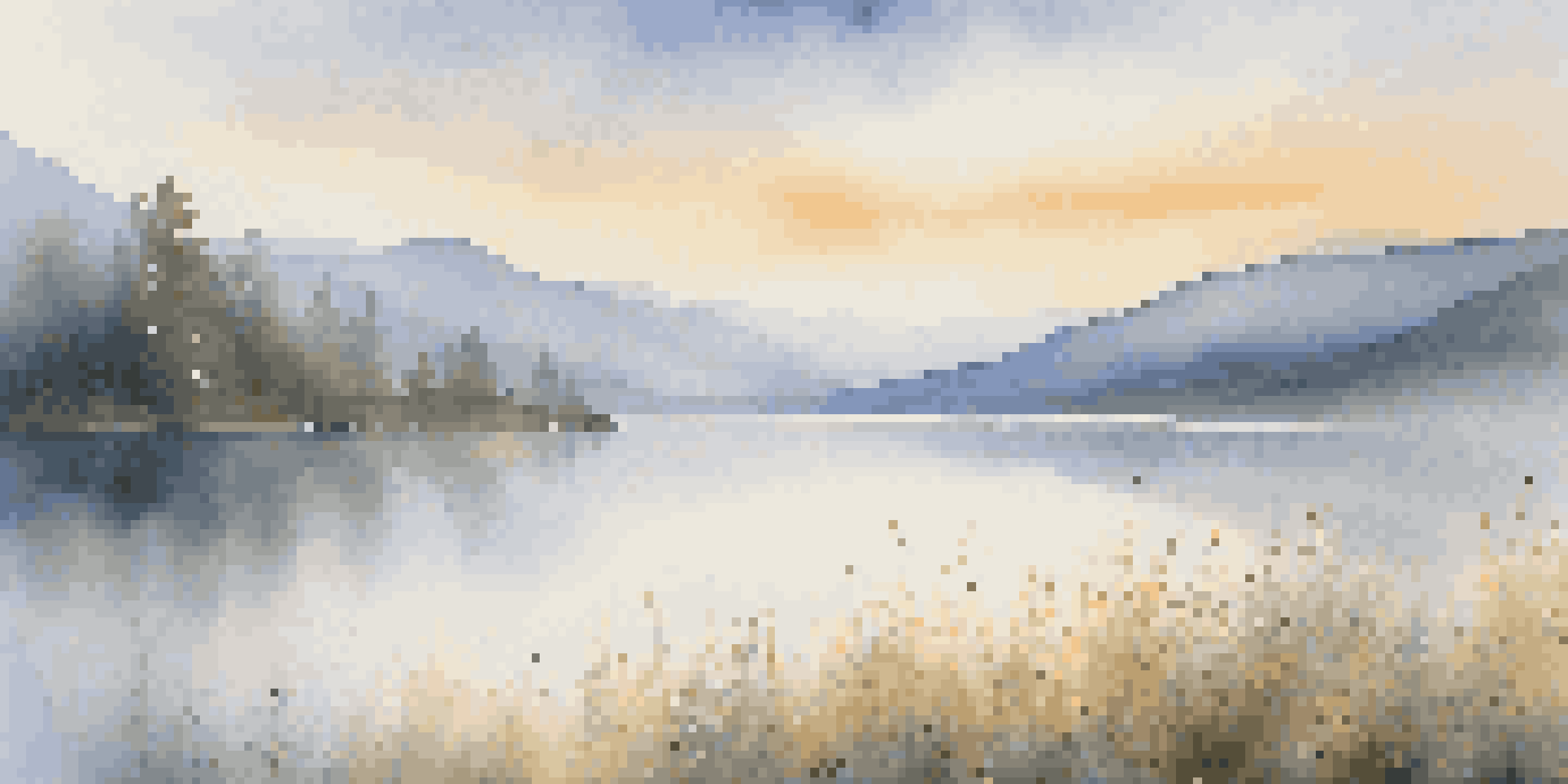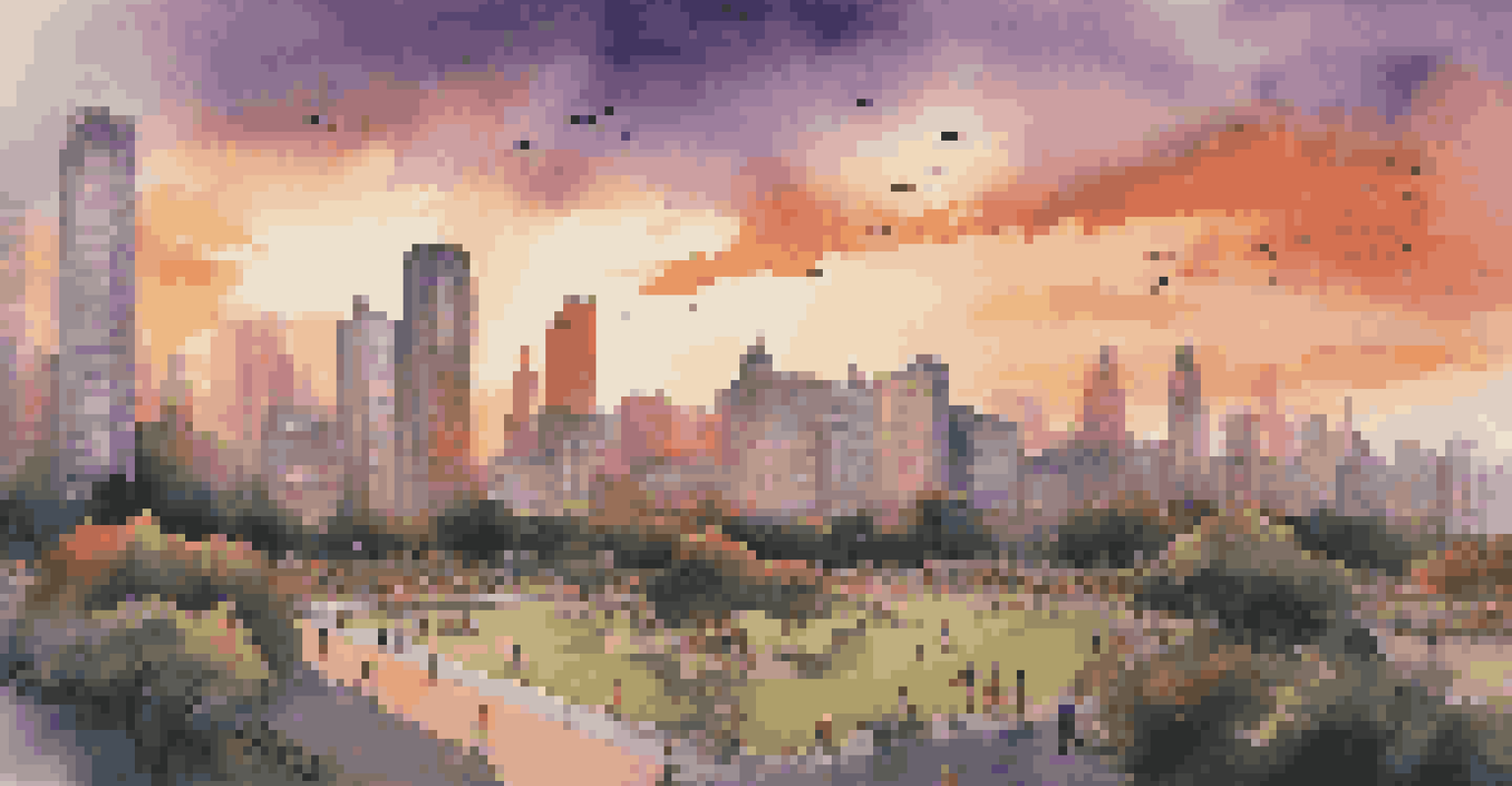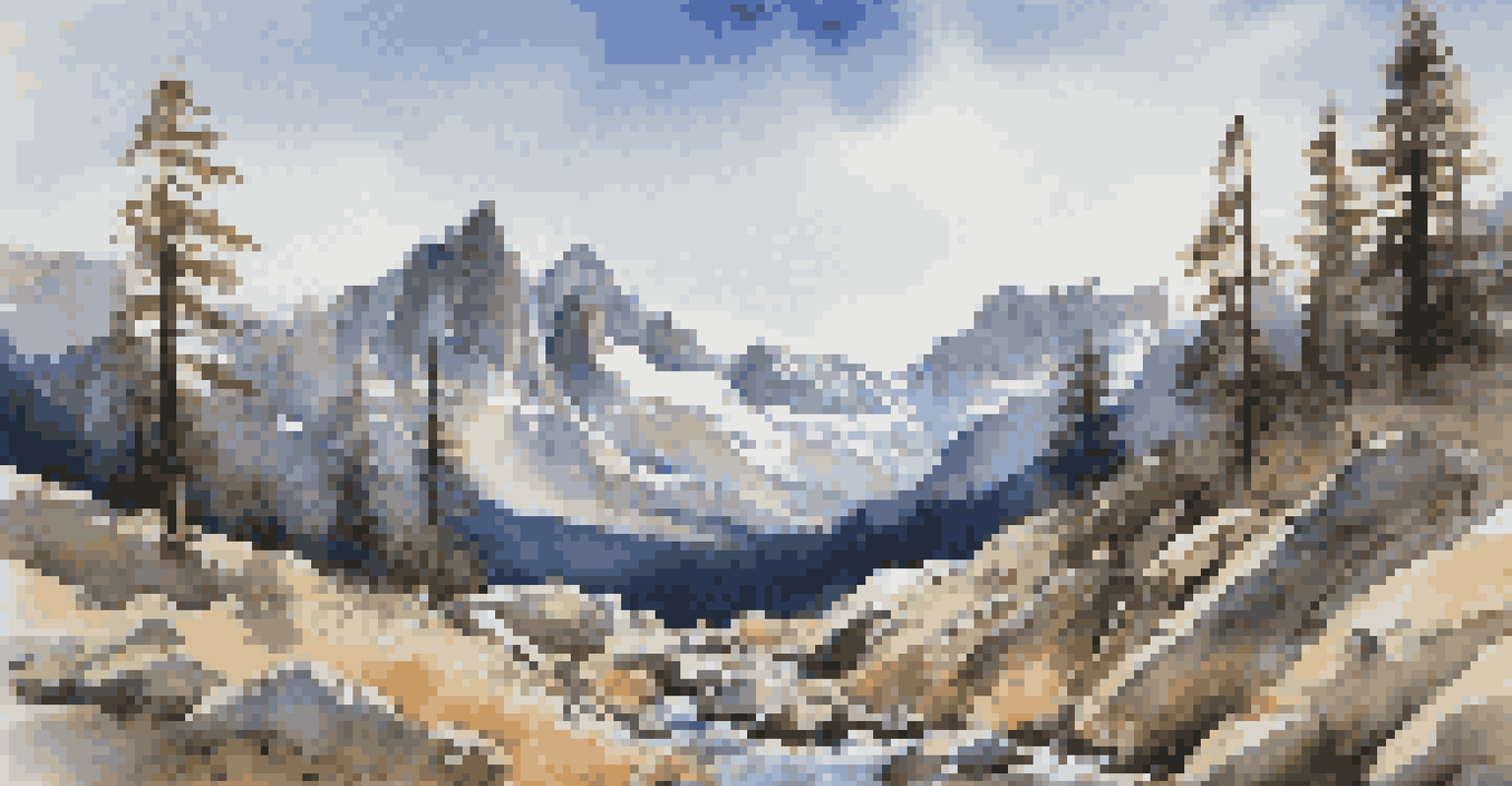The Art of Landscape Painting: Techniques for Capturing Nature

Understanding the Basics of Landscape Painting
Landscape painting is more than just recreating what you see; it's about capturing the essence of a scene. Whether you’re working with oils, watercolors, or acrylics, understanding the basic elements like composition, color, and light is crucial. These fundamentals help you convey mood and atmosphere, transforming a simple view into a compelling work of art.
Painting is just another way of keeping a diary.
To start, familiarize yourself with the rule of thirds, a technique that encourages balanced composition. Imagine dividing your canvas into three equal sections both horizontally and vertically—placing your focal points along these lines can create a more engaging image. Also, consider the importance of light; the way sunlight interacts with the landscape can dramatically alter colors and shadows.
Finally, don’t be afraid to experiment with different techniques and mediums. Each has its own unique qualities that can bring your landscapes to life. For instance, watercolors can create soft, ethereal effects, while oils allow for rich depth and texture. The key is to practice and find what resonates with your artistic voice.
Choosing the Right Location and Subject Matter
When it comes to landscape painting, the world is your canvas, but choosing the right location can make a big difference. Think about what inspires you—whether it’s a serene lake, a bustling city skyline, or a rugged mountain range. Each setting offers unique challenges and opportunities, so select a subject that resonates with your artistic vision.

Consider visiting the location at different times of day to see how the changing light affects the scene. Early mornings can offer soft, golden hues that evoke calmness, while sunsets can create dramatic contrasts. Taking photographs can also help you capture those fleeting moments, providing a reference for later work.
Master Composition and Color
Understanding composition techniques, like the rule of thirds, and mastering color theory can significantly enhance the effectiveness of your landscape paintings.
Lastly, remember that you don’t have to stick to traditional landscapes. Urban environments, abstract interpretations, or even imaginary landscapes can all be valid subjects. The key is to find something that speaks to you personally, allowing your passion to shine through in your artwork.
The Importance of Sketching and Planning
Before diving into painting, sketching is a valuable step that many artists overlook. It allows you to map out your composition and get a feel for the scene without the pressure of color. A simple pencil sketch can highlight the layout of the land, the placement of trees, and even the horizon line, ensuring that you have a solid foundation when you start painting.
Every artist dips his brush in his own soul, and paints his own nature into his pictures.
Additionally, planning your color palette in advance can save you time and frustration. By selecting a range of colors that reflect the scene you’re capturing, you can maintain harmony in your painting. Consider creating a color swatch on a separate sheet to visualize how different hues interact with one another.
Lastly, don’t hesitate to make adjustments as you go along. Your initial plan serves as a guideline, but painting is often an organic process. Be open to spontaneity, allowing your intuition to guide you in real-time adjustments that enhance your landscape.
Mastering Color Theory for Landscape Painting
Color theory is the backbone of any successful landscape painting. Understanding how colors interact can help you create depth and dimension in your work. For instance, warmer colors like reds and yellows can bring objects forward, while cooler colors like blues and greens tend to recede, providing a sense of depth.
Using complementary colors—those opposite each other on the color wheel—can create vivid contrasts that make your landscapes pop. For example, pairing a warm orange sunset with a deep blue sky can evoke strong emotions and draw the viewer's eye. This technique can be particularly effective in creating focal points within your painting.
Embrace Light and Shadow
Capturing the interplay of light and shadow is crucial for adding depth and realism to your landscapes.
Finally, don’t shy away from experimenting with color mixing. Creating your own shades can give your landscapes a unique touch and avoid the pitfalls of overly saturated commercial colors. Mixing colors directly on your canvas can also lead to unexpected and beautiful results, adding an element of surprise to your work.
Capturing Light and Shadow Effectively
Light and shadow play a pivotal role in landscape painting, as they define forms and create dynamic compositions. Observing how light interacts with the landscape can be a game changer. For instance, the way sunlight casts shadows under trees can add depth and realism, making your painting more lifelike.
To capture this effectively, consider the direction of your light source. If it’s coming from the left, shadows will naturally fall to the right. Using a range of values—dark, medium, and light tones—can help you depict this contrast. Keep in mind that shadows aren’t just black; they can be tinted with the colors reflected from surrounding objects.
Finally, practice painting at different times of day. Each moment brings unique lighting conditions, from the soft glow of dawn to the harsh midday sun. By experimenting with these varying conditions, you’ll learn how to adapt and improve your technique, ultimately enhancing your ability to convey mood and atmosphere in your landscapes.
Incorporating Texture into Your Landscape Paintings
Texture adds depth and interest to landscape paintings, making your work more tactile and inviting. There are various ways to incorporate texture, whether through the application of paint, the choice of tools, or the surface you paint on. For example, using a palette knife can create rugged textures that mimic rocky surfaces or tree bark.
Another method is to layer your paint. Start with a base layer and gradually build up texture using thicker paint or different techniques like dry brushing. This approach can add dimension and richness to your landscapes, allowing viewers to feel the presence of the elements you’re depicting.
Experiment with Texture
Incorporating texture through varied techniques and materials can elevate your landscape paintings, making them more engaging and lifelike.
Lastly, consider the surfaces you work on. Canvas, wood, or textured paper can all yield different results. Experimenting with these materials can inspire new ideas and techniques, further enhancing the textural quality of your artwork.
Final Touches: Refining Your Landscape Painting
Once your landscape painting begins to take shape, the final touches can elevate it from good to great. Step back and assess your work with fresh eyes; sometimes, a small adjustment can make a significant impact. Whether it’s adding highlights to a water surface or darkening shadows for contrast, these finishing touches bring your piece to life.
Another technique to refine your painting is to apply a glaze. This involves applying a thin layer of transparent paint over dry areas to unify colors and enhance depth. It can also help correct any mistakes or dull areas, giving your artwork a polished appearance.

Finally, don't forget to sign your masterpiece! This simple act not only marks your ownership but also adds a personal touch to your work. Remember, art is a journey; each painting you create teaches you something new and helps you grow as an artist.